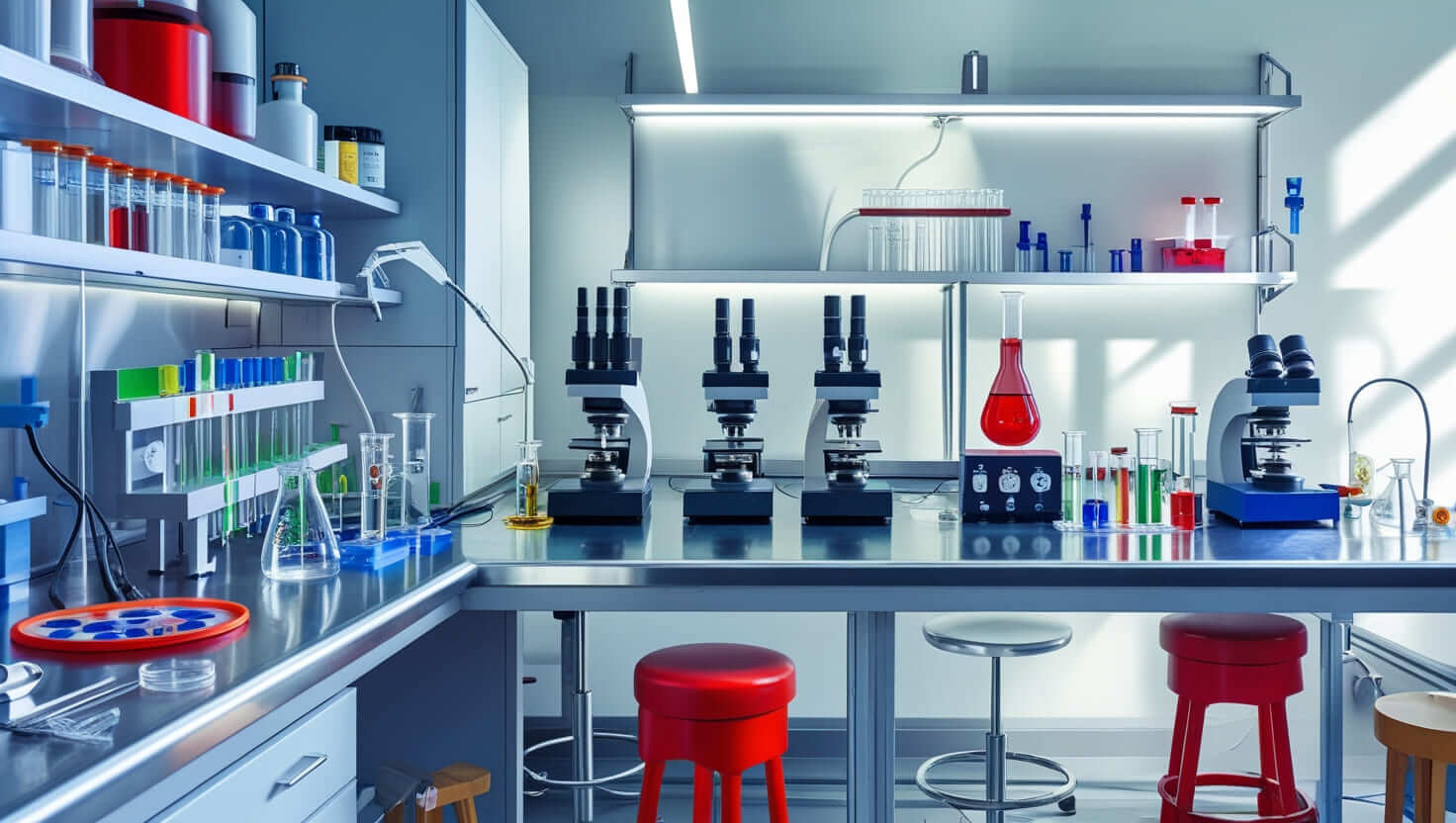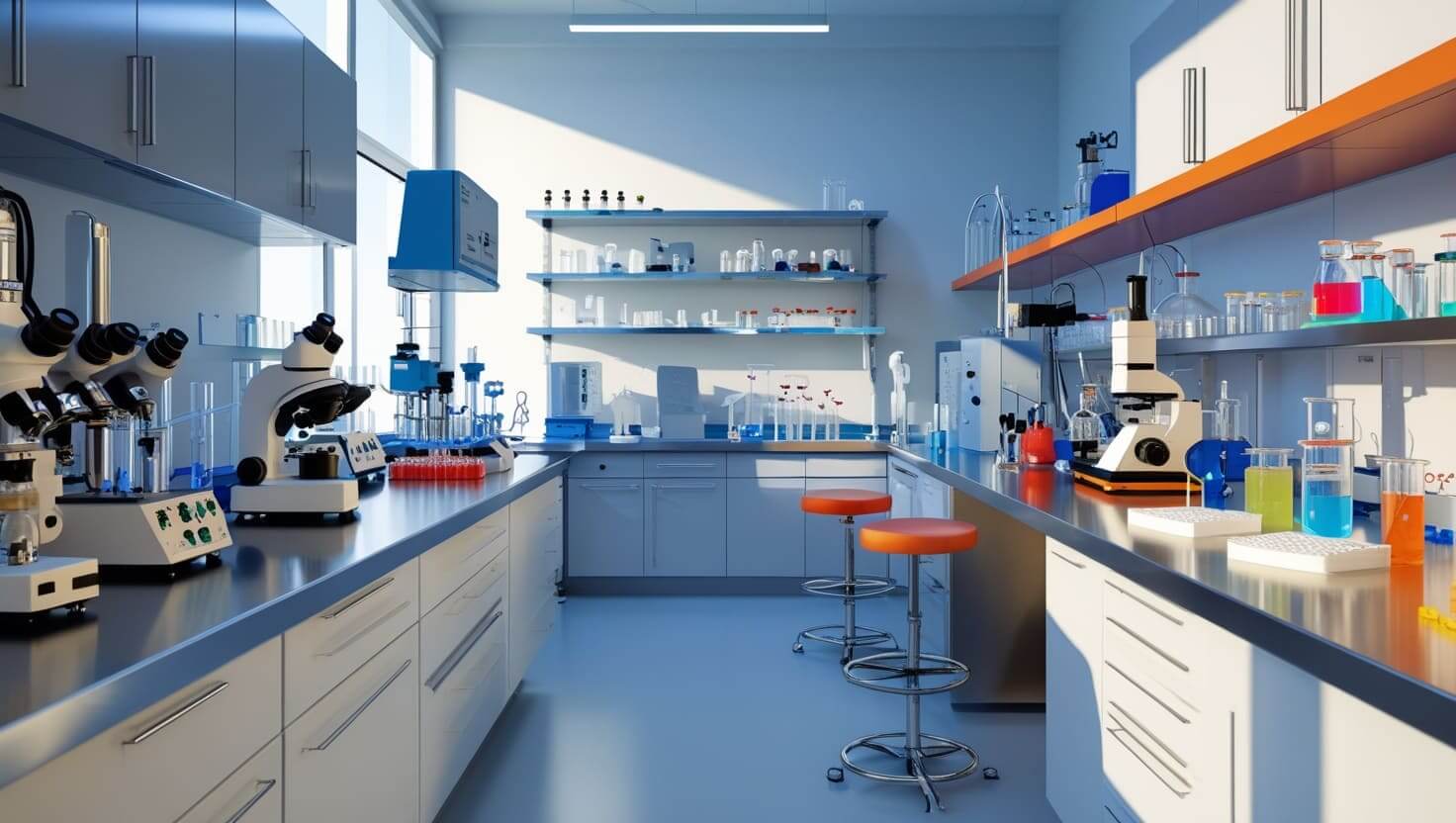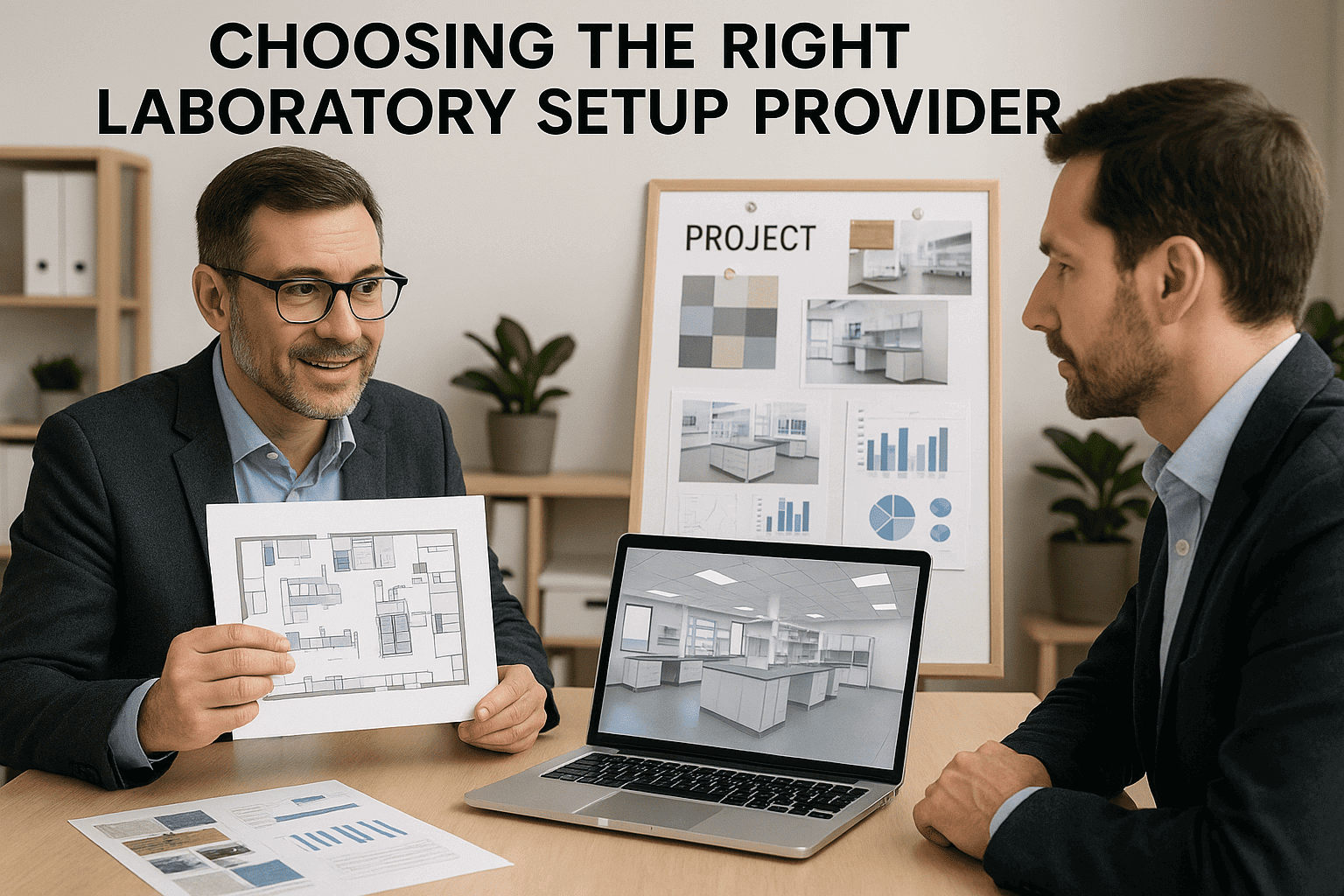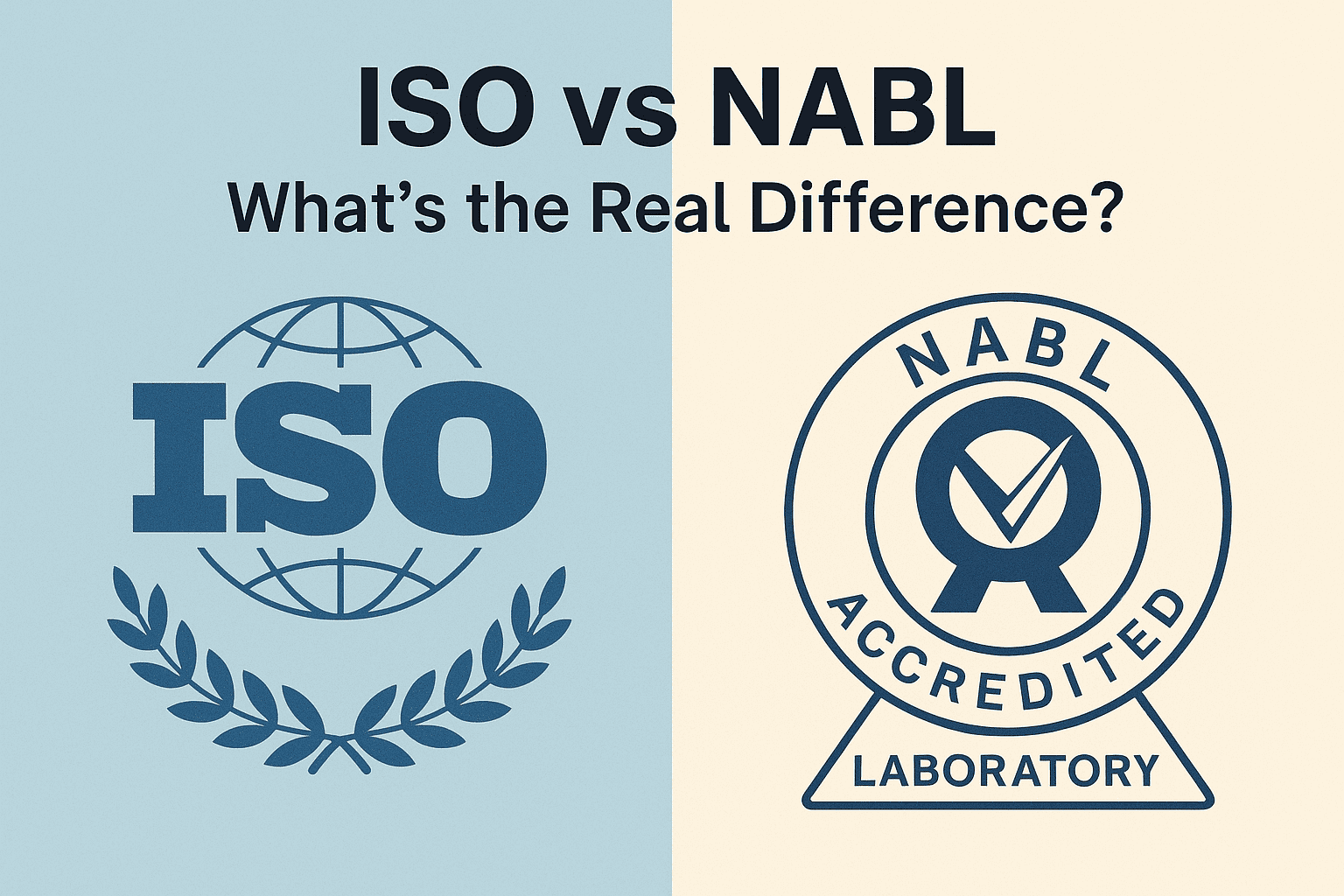Setting up a laboratory is a complex process that demands precision, foresight, and careful planning. Whether you’re establishing a facility for educational, research, or industrial purposes, your lab’s success depends significantly on how well it is designed and equipped. From choosing the right type of lab furniture to complying with safety standards, every detail matters.
In this article, we provide a complete guide to laboratory setup and equipment to help you build a lab that is functional, safe, and future-ready.
1- Understanding the Purpose of Your Laboratory
The very first step in planning a lab is to define its purpose and scope. Are you building a chemical lab, microbiology lab, pathology lab, physics lab, or food testing lab? Each type has different space, equipment, and utility requirements.
A well-thought-out purpose will help you:
- Determine the size and layout
- Choose appropriate workstations and furniture
- Select equipment and instruments tailored to your research or testing needs
For example, a research laboratory would need high-end analytical equipment like spectrophotometers and centrifuges, whereas an educational lab would focus on basic instruments and demonstration tools.
2- Site Selection and Utility Planning
Once your objective is clear, the next phase is selecting a location that offers the right infrastructure, utilities, and safety measures.
Key factors to consider:
- Electricity Supply: Ensure there is sufficient load capacity and proper wiring for lab instruments.
- Water and Drainage: Labs often require purified water connections and chemical-resistant drainage.
- Ventilation: Fume hoods, exhaust systems, and HVAC are essential for chemical and biosafety labs.
- Gas Supply: Required for Bunsen burners, autoclaves, and analytical equipment.
You should also consider proximity to suppliers, ease of access for staff, and compliance with local building codes and health regulations.
3- Laboratory Layout and Equipment Planning
An efficient laboratory layout and equipment planning strategy is vital for safety, productivity, and scalability. The layout should minimize contamination, promote easy movement, and ensure that workflows are optimized.
Components of effective layout planning:
- Zoning: Divide the lab into sections — such as sample preparation, testing, storage, and documentation areas.
- Workstations: Use modular lab furniture that can be customized to the task — chemical-resistant benches, height-adjustable tables, etc.
- Storage: Provide sufficient chemical cabinets, instrument cupboards, and reagent racks.
- Safety Provisions: Include fire extinguishers, eye wash stations, first-aid kits, and safety showers.
Digital layout planning tools or CAD software can help visualize your space before implementation.
4- Choosing the Right Laboratory Equipment
The success of your lab depends significantly on selecting high-quality, durable, and application-specific equipment. Categorize your needs into the following types:
Basic Lab Equipment:
- Beakers, flasks, pipettes, test tubes
- Weighing balances
- Water baths and hot plates
- Lab glassware
Analytical Instruments:
- Spectrophotometers
- pH meters
- HPLC, GC, or UV-Vis systems
- Microscopes
Specialized Equipment:
- Fume hoods or biosafety cabinets
- Incubators and autoclaves
- Centrifuges
- Cleanroom systems (if applicable)
Make sure to choose equipment from reliable manufacturers that offer after-sales support, calibration, and training.

5- Compliance and Safety Standards
Adhering to local and international laboratory safety standards is not optional — it’s a necessity. Your lab should comply with:
- ISO/IEC standards
- Good Laboratory Practices (GLP)
- Fire safety and electrical safety codes
- Waste disposal regulations
Install proper signage for hazardous areas, store chemicals in certified cabinets, and provide regular training for staff. Safety audits should be conducted periodically to identify and correct potential hazards.
6- Installation and Validation
Once the layout is finalized and equipment procured, the next step is installation and validation. It’s advisable to work with professional teams who specialize in how to setup a laboratory correctly and safely.
The process includes:
- Assembling furniture and lab tables
- Installing and testing instruments
- Configuring utilities (power, gas, water)
- Performing calibration and validation for analytical instruments
This ensures your lab is operational and complies with all necessary regulations before you begin work.
7- Maintenance and Lifecycle Management
Setting up the lab is just the beginning. You’ll also need a maintenance plan to ensure smooth, long-term operations.
Key elements:
- Schedule for equipment servicing and calibration
- Reagent and consumables inventory management
- SOPs (Standard Operating Procedures) for lab staff
- AMC (Annual Maintenance Contracts) with service providers
Regular upkeep not only prevents costly downtime but also ensures the accuracy and reliability of test results.
8- Partnering with Experts
If you’re not experienced in managing a full laboratory setup project, it’s wise to collaborate with companies offering lab setup services in India. These firms provide end-to-end solutions from concept to commissioning — including:
- Feasibility studies
- Lab layout design
- Equipment selection and supply
- Utility and safety installations
- Regulatory documentation and validation
By partnering with experts, you save time, reduce errors, and ensure that your lab meets international standards from Day 1.
9- Budgeting and ROI
Cost estimation is a critical part of laboratory planning. Your budget will depend on:
- Type and size of the lab
- Equipment grade (educational vs industrial)
- Safety and automation levels
Break the budget into categories:
- Civil construction
- Furniture and utilities
- Equipment procurement
- Safety and compliance
- Operational training and documentation
While setting up a lab involves significant investment, the returns in terms of productivity, research capabilities, and institutional reputation make it worthwhile.
Conclusion
Setting up a lab is more than buying furniture and equipment — it’s about building a safe, efficient, and scalable environment that supports your mission. From laboratory layout and equipment planning to installing specialized instruments, every decision impacts long-term success.
Whether you’re a startup, an educational institution, or an industrial manufacturer, understanding how to setup a laboratory is crucial for achieving consistent, accurate, and safe results. For a seamless experience, consider hiring experienced professionals who offer lab setup services in India tailored to your specific needs.



